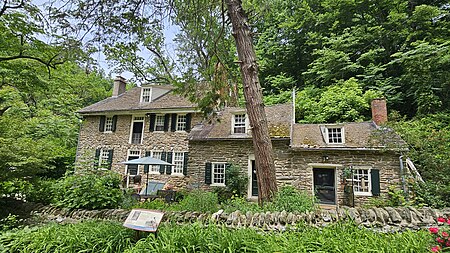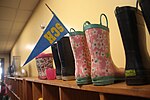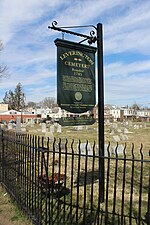Livezey House

The Livezey House, also known as Glen Fern, is a historic house and mill on the east side of Wissahickon Creek in Philadelphia, Pennsylvania. It was designated on the Philadelphia Register of Historic Places on June 26, 1956.The house was constructed (c.1725) by Thomas Shoemaker and sold to Thomas Livezey, Jr. (1723–1790) on October 10, 1747, who constructed a mill at the site. The following year, on April 2, Livezey married Martha Knowles. They were devout Quakers and raised a large family of 5 sons and 5 daughters in that tradition at Glen Fern, some of whom inherited the management of the mill. Livezey's descendants occupied Glen Fern for more than 120 years.
Excerpt from the Wikipedia article Livezey House (License: CC BY-SA 3.0, Authors, Images).Livezey House
Livezey Lane, Philadelphia
Geographical coordinates (GPS) Address Nearby Places Show on map
Geographical coordinates (GPS)
| Latitude | Longitude |
|---|---|
| N 40.04944 ° | E -75.21325 ° |
Address
Glen Fern
Livezey Lane 1199
19128 Philadelphia
Pennsylvania, United States
Open on Google Maps







